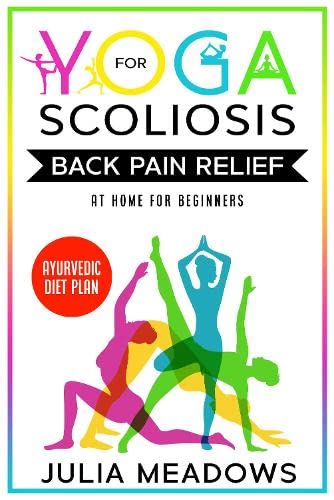When it comes to alleviating nagging back pain, the age-old question remains: should one turn to yoga or opt for other forms of exercise? Let’s dive into the world of soothing stretches, mindful movements, and invigorating workouts to find out which option reigns supreme in the battle against back pain.
What Causes Back Pain?
Back pain is a prevalent and multifaceted condition that can arise from a wide range of factors. Understanding the underlying causes of back pain is crucial in effectively addressing and managing the discomfort. Some of the most common contributors to back pain include:
- Muscle Strains and Ligament Sprains: Overstretching or tearing of muscles and ligaments in the back can occur due to sudden movements, improper lifting techniques, or excessive physical exertion. Strains and sprains often result in localized pain and stiffness.
- Poor Posture: Maintaining an incorrect posture, whether while sitting, standing, or lifting heavy objects, can place undue stress on the spine and its supporting structures. Over time, poor posture can lead to chronic back pain.
- Overuse and Repetitive Movements: Engaging in repetitive activities or movements that involve bending, twisting, or lifting can strain the back muscles and lead to pain and discomfort, especially if done for extended periods without adequate breaks.
- Herniated Discs: The spinal discs act as shock absorbers between the vertebrae, but they can become herniated or bulge out, pressing on nearby nerves and causing intense pain, tingling, or numbness.
- Spinal Abnormalities: Structural issues in the spine, such as scoliosis (sideways curvature) or lordosis (excessive inward curvature), can lead to imbalanced stress on the back and result in chronic pain.
- Underlying Medical Conditions: Various medical conditions can contribute to back pain, including arthritis, osteoporosis, spinal stenosis (narrowing of the spinal canal), fibromyalgia, and spondylitis (inflammation of the vertebrae).
- Obesity: Excess weight puts added strain on the spine, leading to increased pressure on the back muscles and discs, which can trigger or worsen back pain.
- Lack of Exercise: A sedentary lifestyle and lack of regular physical activity can weaken the back muscles and reduce flexibility, making the back more susceptible to pain and injury.
- Emotional Stress: Stress and anxiety can manifest physically, leading to muscle tension and increased sensitivity to pain, which may contribute to or exacerbate existing back pain.
- Accidents and Injuries: Traumatic events, such as car accidents or falls, can cause sudden, severe back pain due to fractures, dislocations, or soft tissue injuries.
It’s essential to identify the specific cause of back pain to develop an appropriate treatment plan. Seeking medical evaluation for persistent or severe back pain is advisable to rule out any serious underlying conditions and receive tailored care for a quicker and more effective recovery.
Maintaining a healthy lifestyle, practicing proper body mechanics, and incorporating regular exercise can also help prevent or minimize back pain in the long term.
Yoga: A Gentle Path to a Pain-Free Back
Yoga, the ancient practice that harmonizes mind, body, and soul, has been revered for centuries as a potent remedy for various physical and mental ailments. In the context of back pain, yoga emerges as a gentle yet powerful contender for healing. Here’s why:
- Increased Flexibility: Yoga’s signature stretches and poses work wonders to enhance flexibility, providing relief to tight muscles and stiff joints.
- Strengthening Core Muscles: A strong core translates to better back support, and yoga targets those deep-seated muscles that bolster your spine.
- Improved Posture: By promoting awareness of the body’s alignment, yoga helps rectify poor posture habits that often contribute to back pain.
- Stress Reduction: Stress can exacerbate back pain, but yoga’s mindfulness and relaxation techniques counteract this, leaving you feeling serene and rejuvenated.
Other Exercises: The Might of Dynamic Alternatives
While yoga holds a special place in the hearts of those seeking inner peace, other exercises bring their own formidable advantages to the battleground of back pain:
- Cardiovascular Exercises: Activities like swimming, brisk walking, and cycling increase blood flow, delivering essential nutrients to the back for quicker healing.
- Strength Training: Engaging in resistance exercises not only builds muscle but also provides support to the spine, reducing the strain on your back.
- Pilates: Similar to yoga, Pilates focuses on core strength, flexibility, and posture, making it an attractive choice for back pain relief.
- Low-Impact Aerobics: These exercises keep stress off your joints while promoting flexibility and strength, an ideal option for those with back issues.
Yoga vs. Other Exercises: Head-to-Head Comparison
To help you make an informed decision, here’s a side-by-side comparison of yoga and other exercises in their fight against back pain:
| Criteria | Yoga | Other Exercises |
|---|---|---|
| Intensity | Gentle and Low Impact | Varied: Low to High Impact |
| Focus | Mind-Body Connection | Cardiovascular and Strength |
| Flexibility | Excellent | Varied: Depends on Exercise |
| Core Strengthening | Yes | Yes |
| Posture Correction | Emphasized | Not the Main Focus |
| Stress Reduction | High | Moderate |
Frequently Asked Questions about Back Pain and Exercise
Q: Can yoga worsen back pain?
A: When done incorrectly, certain yoga poses may strain the back, leading to discomfort and potentially exacerbating existing back pain. It’s essential to practice yoga under the guidance of a knowledgeable instructor who can ensure proper alignment and technique.
Beginners, in particular, should approach yoga with caution, starting with gentle poses and gradually advancing as they build strength and flexibility.
Q: Is weightlifting safe for back pain?
A: Yes, weightlifting can be safe and beneficial for individuals experiencing back pain, but only if proper form is maintained throughout the exercises.
When lifting weights, especially those targeting the back or core muscles, it’s crucial to keep the spine in a neutral position and engage the core to provide adequate support. Starting with lighter weights and gradually increasing the load can help the back adapt and minimize the risk of injury.
Q: Can cardiovascular exercises alleviate chronic back pain?
A: Absolutely! Engaging in regular cardiovascular exercises, such as swimming, walking, or cycling, can improve blood flow and circulation throughout the body, including the back area.
Increased blood flow delivers essential nutrients and oxygen to the muscles, promoting faster healing and reducing chronic back pain. However, individuals with back issues should opt for low-impact cardiovascular exercises to minimize stress on the spine.
Q: Is yoga a good option for people with severe back issues?
A: Yes, yoga can be a valuable option for individuals with severe back issues, but it requires careful consideration and modifications. Yoga can be adapted to accommodate various back conditions, including herniated discs, sciatica, or spinal stenosis.
However, it is crucial to consult with a healthcare provider or a qualified yoga instructor who has experience in working with individuals with back problems. They can tailor the practice to suit the person’s specific needs and limitations.
Q: Are there specific yoga poses to avoid for individuals with back pain?
A: While yoga can be beneficial for back pain, some poses may exacerbate certain conditions. Individuals with back issues should avoid or modify poses that involve deep backbends, extreme twists, or forward bends with straight legs.
Poses like the full wheel (Urdhva Dhanurasana), deep twists (Ardha Matsyendrasana), and standing forward folds (Uttanasana) with locked knees should be approached with caution. It’s crucial to communicate any discomfort or concerns with the yoga instructor, who can offer alternative poses or adjustments.
Q: Is it normal to feel sore after starting a new exercise routine for back pain?
A: Yes, it’s normal to experience some muscle soreness, especially when beginning a new exercise routine for back pain. This soreness, known as delayed onset muscle soreness (DOMS), typically occurs within 24 to 48 hours after exercise.
It’s a natural response as the muscles adapt to the new demands placed on them. However, if the pain is severe or persistent, it’s essential to consult with a healthcare professional to rule out any underlying issues and ensure that the exercise routine is suitable for your specific condition.
Q: Can certain lifestyle habits contribute to back pain despite exercise?
A: Yes, lifestyle habits can play a significant role in contributing to back pain, even if one engages in regular exercise. Poor posture, excessive sitting, improper lifting techniques, and a sedentary lifestyle can all strain the back and lead to discomfort.
Combining exercise with proper body mechanics and ergonomics in daily activities can help prevent and alleviate back pain more effectively.
Conclusion on Back Pain
In the epic showdown between yoga and other exercises for combatting back pain, there’s no definitive winner. The choice between the two ultimately depends on individual preferences, physical condition, and specific back issues. Yoga offers a holistic approach, enhancing flexibility, core strength, and mindfulness, while other exercises bring their own dynamic benefits, like cardiovascular fitness and targeted strength training.
In the end, the key to conquering [back pain] lies in finding the exercise regimen that resonates most with you. So, whether you prefer the serenity of a yoga mat or the invigorating rush of cardio, remember that consistent, mindful movement will lead you on the path to a healthier, happier back.
Fun Fact: Did you know that yoga dates back over 5,000 years and originated in ancient India?
Remember, always consult a healthcare professional before starting any new exercise routine, especially if you have pre-existing back conditions. Stay safe and enjoy your journey to a pain-free back through the power of mindful movement!
Originally posted 2023-03-11 14:51:26.






